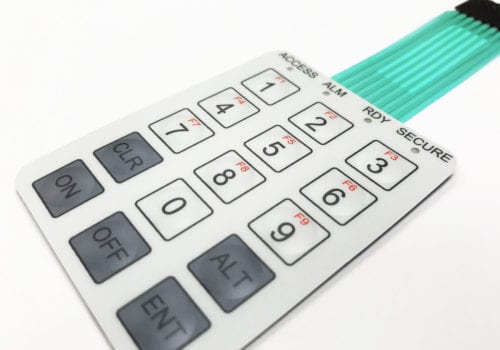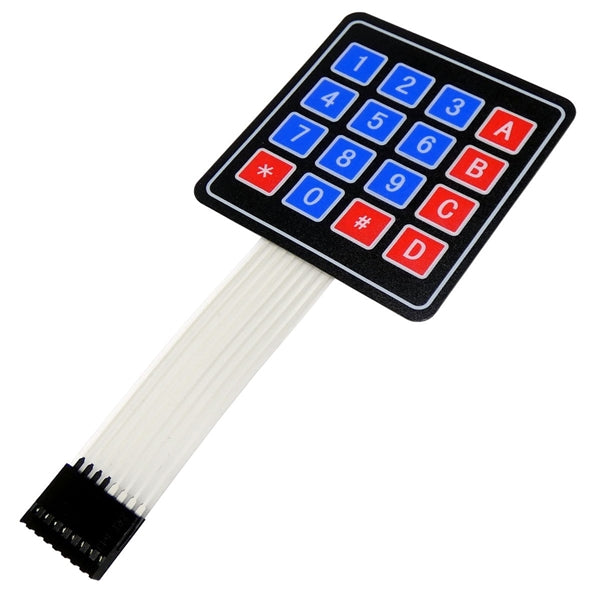Recognizing Membrane Changes: The Key to Long Lasting and Reputable Controls

What Are Membrane Switches?
Membrane switches are an advanced remedy in the world of interface innovation, integrating functionality and layout seamlessly. These gadgets work as a user interface in between individuals and digital systems, incorporating numerous parts right into a portable layout. Typically constructed from flexible, thin layers of products, membrane layer buttons are made to react to touch, making it possible for customers to connect with equipment and digital gadgets successfully.
The key aspects of a membrane layer switch include a printed circuit layer, visuals overlay, and a spacer layer that prevents unintended activation. The visuals overlay can be tailored to mirror brand name identity or user preferences, boosting visual appeals while ensuring use. Membrane layer buttons are typically utilized in numerous applications, consisting of medical devices, customer electronic devices, and industrial equipment, owing to their resilience and resistance to ecological aspects such as dampness and dirt.
One of the vital benefits of membrane buttons is their capability to endure wear and tear, making them excellent for high-traffic atmospheres. Additionally, they are light-weight and need minimal room, enabling innovative layouts in product growth. In general, membrane changes represent a sensible and effective choice for modern-day electronic user interfaces, marrying modern technology with user-centric style concepts.
How Membrane Layer Switches Job
The procedure of membrane switches hinges on a straightforward yet effective system that converts user input right into electronic signals. When an individual presses the button, the top layer flaws, permitting a conductive element in the circuit layer to make call with an equivalent conductive pad on the bottom of the graphic overlay.
The design of membrane buttons can differ, yet they frequently integrate domes or responsive components to give feedback to the user, enhancing the overall experience - membrane switch. The materials utilized in membrane switches, such as polyester or polycarbonate, add to their longevity and resistance to environmental factors, including moisture and dust. The printed circuits are typically encapsulated, which protects them from wear and tear over time.
Benefits of Membrane Layer Buttons

Additionally, membrane switches are known for their toughness. Created from durable products, they are immune to dirt, dampness, and physical wear, which significantly resource extends their lifespan compared to traditional mechanical switches. This durability makes them particularly suitable for high-traffic environments and applications requiring longevity.
Another significant advantage is the convenience of cleansing and upkeep. The smooth surface area of membrane changes reduces dust accumulation and is often impervious to spills, making them perfect for setups that need constant sanitization.
Moreover, membrane layer buttons use a structured profile, resulting in a thinner design that can be incorporated right into different devices without including mass. This function not only boosts the visual charm but also adds to official source a much more ergonomic product layout.
Applications of Membrane Layer Switches
Straightforward and functional, membrane buttons discover applications across a wide variety of markets, including medical tools, consumer electronics, and industrial tools. In the medical area, these buttons are essential to devices such as diagnostic equipment, person tracking systems, and mixture pumps, where integrity and simplicity of cleansing are essential. Their capability to withstand rough settings and preserve performance makes them optimal for such applications.

In consumer electronic devices, membrane layer buttons are utilized in products like microwaves, cleaning devices, and remote controls - membrane switch. Their smooth style enables user-friendly user interfaces, improving the total user experience while offering durability and resistance to tear and put on
Commercial equipment likewise profits from membrane layer buttons, particularly in control panels for machinery and blog here automation systems. These switches use defense versus dust and moisture, making sure regular efficiency in challenging atmospheres. Moreover, their personalized attributes allow manufacturers to tailor them to particular operational requirements, improving performance and performance.
Choosing the Right Membrane Switch
When selecting a membrane button, it is vital to consider various factors that affect efficiency and viability for particular applications. The primary considerations consist of ecological conditions, tactile feedback, durability, and layout requirements.
First, examine the operating atmosphere; switches revealed to dampness, chemicals, or extreme temperatures call for certain materials to ensure longevity and capability. Next, evaluate the demand for responsive feedback. Relying on individual interaction, some applications might profit from a tactile feedback to verify activation, while others may like a non-tactile style for aesthetic factors.
Resilience is another essential element; membrane buttons should be made to stand up to frequent usage, impacts, and abrasion. Make certain the chosen button can withstand the anticipated lifecycle, especially in high-usage circumstances.

Final Thought
In final thought, membrane switches over serve as essential elements in the style of durable and trustworthy control systems throughout various markets. The adaptability of membrane layer switches allows for tailored options that fulfill specific operational requirements, strengthening their relevance in modern-day innovation.
Membrane switches represent an important facet of modern-day user interface layout, blending functionality with resilience in various applications.Membrane switches are a sophisticated service in the realm of individual interface innovation, integrating performance and style effortlessly. Commonly created from adaptable, slim layers of products, membrane layer buttons are created to respond to touch, allowing individuals to communicate with machinery and electronic devices efficiently.
The design of membrane buttons can differ, yet they often include domes or responsive components to supply comments to the individual, improving the total experience.In verdict, membrane layer changes offer as necessary elements in the design of trustworthy and long lasting control systems across different industries.